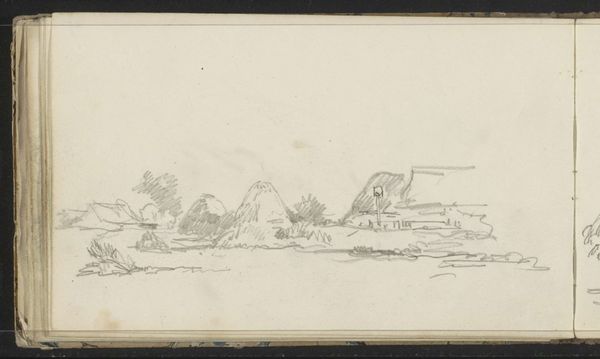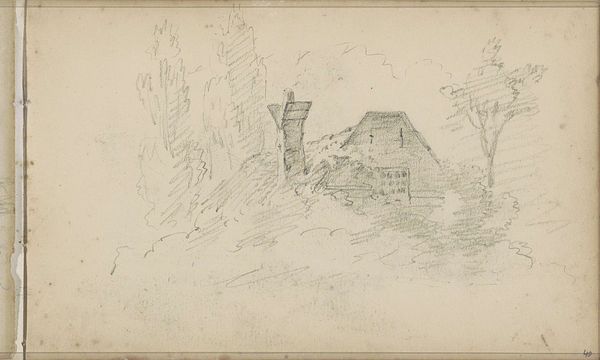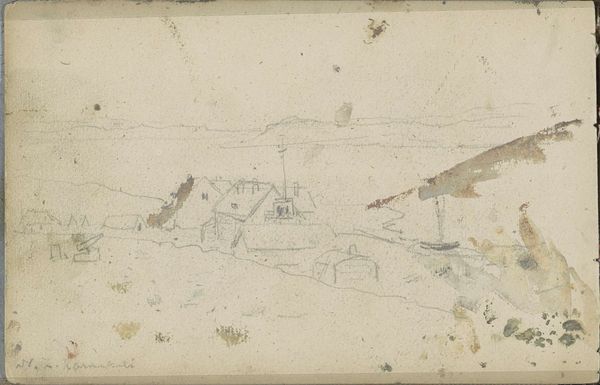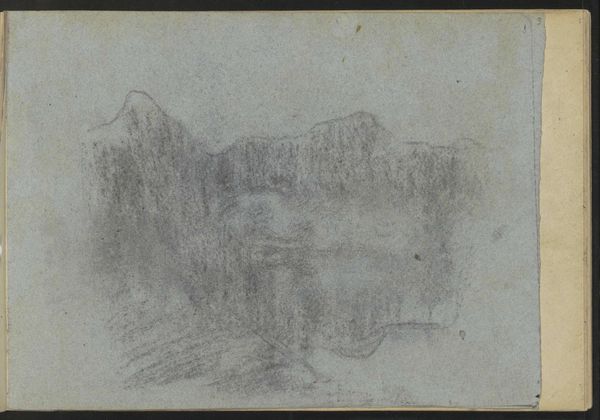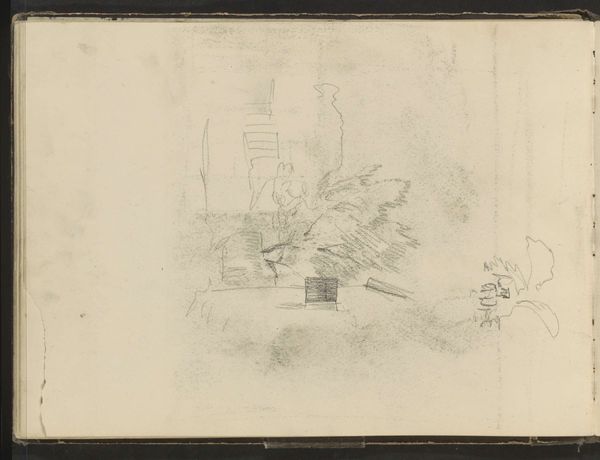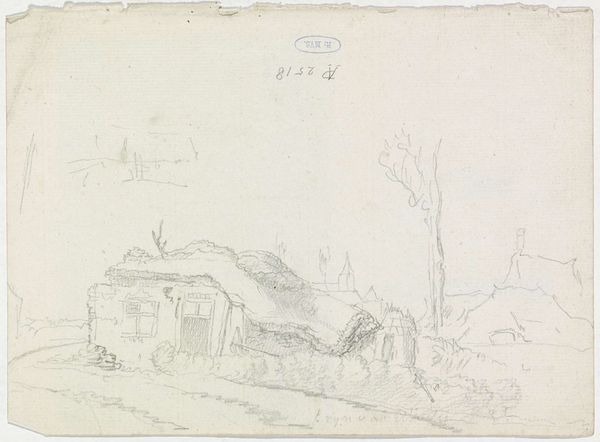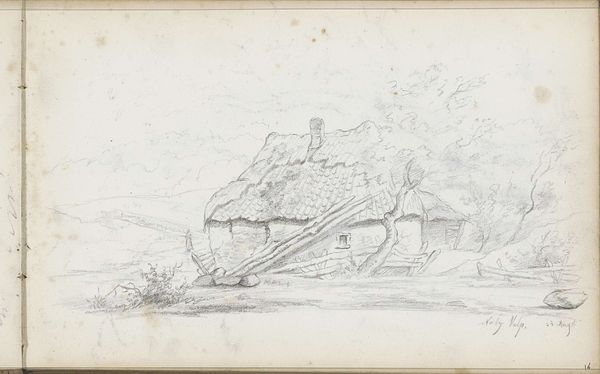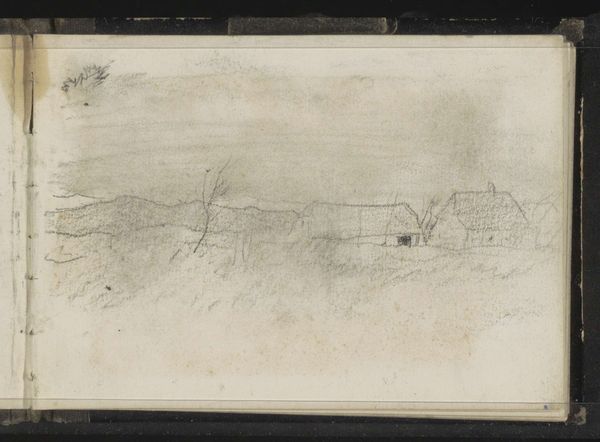
drawing, paper, pencil
#
drawing
#
pencil sketch
#
landscape
#
paper
#
pencil
#
realism
Dimensions: height 184 mm, width 282 mm
Copyright: Rijks Museum: Open Domain
Curator: Welcome. I’m excited to share Willem Cornelis Rip’s “Barn and a Sheep’s Head,” rendered in pencil on paper around 1874. Editor: Oh, I see it. It’s… quiet. A very hushed little landscape, almost a whisper of a scene. Sparse. What drew Rip to *this*, I wonder? Curator: Rip, known for his keen observations of rural life, may have been drawn to the simplicity. It captures a common barn of the time, the very essence of a humble countryside scene in a bygone era. The inclusion of the sheep’s head perhaps suggests something about life and sustenance. Editor: Right! The barn is such a loaded image! For so long, barns meant safety, abundance, family, animals and were built so that families and animals lived side-by-side and animals sheltered in it alongside harvested crops – talk about safety. I wonder, what does the barn MEAN here, to the artist? Curator: The symbol is interesting, particularly alongside the isolated sheep’s head. We see both structures existing with clear, shared purpose, both life-sustaining but in their separateness maybe hints to vulnerability as well. There’s this clear desire to show everything, literally everything needed for livelihood within these stark scenes. Editor: I like how Rip places the sheep's head so high up and out of place. Like a spectral emblem watching over things. The positioning transforms it, lifts it out of the everyday and infuses the mundane with… what? Mystery? Unease? Curator: Yes, it gives pause. It encourages deeper reflection. Rip’s light touch in creating this sketch allows the scene to unfold in the viewer’s mind, prompting individual narratives based on cultural touchstones. This reminds us how powerfully symbolism impacts us still. Editor: Agreed! A little drawing, yet it has an unsettling potency. It lingers, doesn’t it? Long after you’ve stopped looking. Curator: Precisely, that enduring quality suggests that beyond being aesthetically engaging, art becomes an artifact embodying cultural continuity that evokes memory, identity and our shared history through iconography that evolves.
Comments
No comments
Be the first to comment and join the conversation on the ultimate creative platform.
